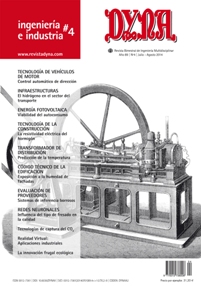VIRTUAL REALITY AND AUGMENTED REALITY INDUSTRIAL APPLICATIONS
Keywords:
Realidad Virtual, Realidad Aumentada, Diseño, Mantenimiento, Fabricación, Virtual Reality, Augmented Reality, Design, Maintenance, ManufacturingAbstract
In the last twenty years has made ??significant progress in research and innovation on the development of virtual environments in reality (VR) and augmented reality (AR), and today, many advances have been harvested. Its main applications include sectors such as leisure, simulation, education, archeology and medicine. Similarly, we have studied the possible applications of these technologies in industry, resulting in proven useful in both product development stages and later stages of their life cycle. It is presented in this work a guide of good practices for make a resistivity meter of 4-points and low-cost. We will detail all the necessary steps essentials in the usage of the device. Validation from the series of trials. Description of device and auxiliary elements. Evaluation of greater stability and precision regarding different voltage measurements in AC and in DC calibrated to values of 160 ± 2 O.m. and 1200 ± 24 O.m. The 4-points device or Wenner, as it is known, determines the electrical resistivity in cylindrical tests of 150 x 300 mm concrete. We compare these results with other tests carry out by the application of the direct method and also with tests run by commercial devices. We propose a methodology employing resistivity measurement to establish the degree of concrete curing during the early stages of hardening in relation to values obtained in concrete standards. We also provide experimental detail of concrete at different stages and curing times. The concrete studies we studied were dry basalt mixes and Portland cement mixed with natural Pozzolan (CEM II/B-P 32,5N)Downloads
Published
2014-07-01
Issue
Section
ARTICULOS

